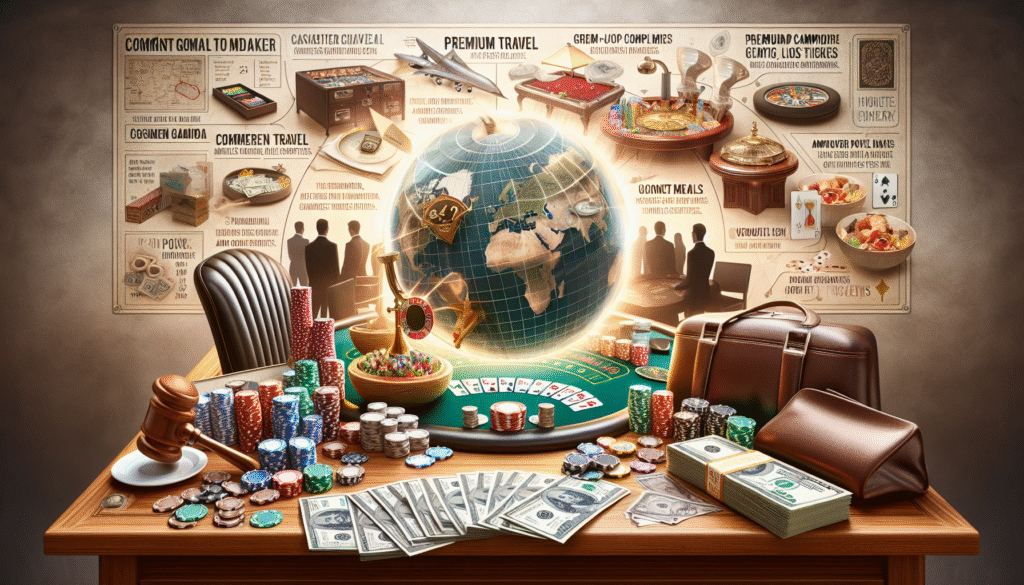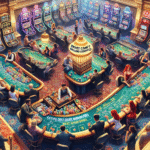
Top Mistakes Amateur Poker Players Make & How to Avoid Them
For casino travelers seeking smarter play, this guide dives deep into the common errors made at the poker table and across various casino table games, while integrating actionable insights for planning a cost-effective and rewarding trip. Whether you’re new to the scene or a seasoned advantage player, understanding the nuances of table game rules, expected loss math, and smart travel timing is essential.
Why Casino Travel Strategy and Table Game Rules Matter
Casino travel isn’t merely about booking flights and hotel rooms – it involves a meticulous approach, from assessing table game rules to maximizing comps through loyalty programs. As regulations evolve (see NVGCB and UKGC updates), players must stay updated to avoid pitfalls. In 2024-2025, minor rule changes and updated betting minimums can dramatically affect expected losses and overall trip enjoyment.

Common Mistakes at the Poker Table and Tips to Avoid Them
1. Overplaying Hands: Many amateur poker players engage in too many hands, often misjudging the optimal playing range. Remember, tight play often leads to less variance and more consistent results. Use tools like Wizard of Odds to review your hand ranges.
2. Bluffing Too Often: Bluffing is an art that requires timing. Overusing bluff tactics without reading opponents often results in costly mistakes. Instead, study charts available on sites like Blackjack Apprenticeship for strategic insights on when to engage in bluffing moves.
3. Overvaluing Weak Hands: Knowing the odds is crucial. With every decision, measure the risk versus reward. A simple expected loss formula to keep in mind: Expected Hourly Loss = Bet Size × Decisions/Hour × House Edge.
Expected Loss Calculator – Sample Formula
function calculateExpectedLoss(betSize, decisionsPerHour, edgePercent) {
return betSize * decisionsPerHour * (edgePercent / 100);
}
// Example: $10 bet, 60 decisions/hour, and an edge of 1.41%
console.log(calculateExpectedLoss(10, 60, 1.41)); // Expected loss per hourMastering Casino Table Games Beyond Poker
While poker mistakes are common, other table games like blackjack, roulette, and craps are equally unforgiving if you fail to optimize rule sets and bet sizes. Here are some crucial comparisons:
| Game/Rule | House Edge Impact | Key Considerations |
|---|---|---|
| Blackjack 3:2 vs 6:5 | 3:2: ~0.5%-1%; 6:5: adds ~+1.39% | Seek tables offering 3:2 payouts for lower expected loss |
| Roulette Wheels | Single-zero: ~2.70%, Double-zero: ~5.26%, Triple-zero: ~7.69% | Prefer European (single-zero) wheels for a better return |
| Craps | Pass Line: ~1.41%, Don’t Pass: ~1.36% | Use odds bets as they carry 0% house edge |
Understanding these subtle differences is crucial for planning your session envelopes and bankroll management – a tactic that can extend your play and reduce risk. Visit our Bankroll Management Guide for detailed envelope strategies.
Smart Casino Travel: Timing, Loyalty, and Trip Planning
Traveling for casino play is more than a weekend escape; it’s about optimizing every hour spent at the table. By employing tools like Vegas Advantage and loyalty programs such as MGM Rewards or Caesars Rewards, players can spot low minimums and secure valuable comps. Here’s what to consider:
- Timing: Travel during shoulder seasons to beat peak pricing and find lower table minimums.
- ETGs (Early Table Games): Start with low-stakes games (ETG bets usually range between $3–$5) to warm up without risking too much of your bankroll.
- Loyalty Programs: Enroll in rewards programs that not only offer comps on play but can also provide discounts on hotels, dining, and even flights.

A concrete case study from a recent 3-day Vegas trip with a $900 bankroll: By starting with ETG wagers at $3–$5 and focusing on 3:2 blackjack tables downtown, the traveler not only extended playtime but also captured high-value comps, reducing the expected hourly loss by over 15%. For more details on how these strategies work, check out our guide on Vegas Low-Min Tables 2025.
Advanced Rule-Check and Bankroll Math Concepts
Elite casino travelers blend rule comparisons with calculated bankroll math. Consider this formula for expected hourly loss:
Expected Loss = Bet Size × Decisions per Hour × (House Edge ÷ 100)
For example, for a $10 bet executed 60 times an hour with a 1.41% edge, the calculation is:
10 × 60 × (1.41/100) = $8.46 per hour
This simple yet effective math helps in planning session envelopes and determining comp thresholds to keep play sustainable. Additionally, variance and risk-of-ruin metrics form part of a more robust risk management plan. Frequent reviews of services such as Wizard of Odds aid in recalibrating strategies in line with current rule sets.
Comparing Real-World Tools for Casino Travelers
When planning your strategy, choosing the right tool is crucial. Here are a few recommended platforms:
- Wizard of Odds: Offers interactive rule calculators and in-depth analyses of game variants. Public and free, it’s perfect for both beginners and serious players seeking data-driven insights.
- Vegas Advantage: Known for its table-minimum surveys, this platform helps you find low-edge rules and optimal play environments. Its data is updated regularly, making it ideal for planning trips during off-peak seasons.
- Blackjack Apprenticeship: Provides detailed charts and video tutorials that break down rule deltas, such as the additional +1.39% edge for 6:5 payouts. This resource is excellent for players wanting to deepen their technical game understanding.
- MGM Rewards & Caesars Rewards: Both offer comprehensive loyalty programs that integrate seamlessly with in-casino spending. They provide real-time tracking of comps and special deals, which can dramatically extend your gaming session if used wisely.
Responsible Gaming and Regulatory Landscape
Understanding the available Responsible Gaming (RG) tools is a must. Sites like the NVGCB, the UKGC, and the GRA/NCPG Singapore provide guidelines on self-exclusion and deposit limits. Moreover, platforms such as DICJ Macau and AGCO/iGaming Ontario offer real-time tools for monitoring and managing excessive play, ensuring that your casino adventures remain fun and controlled.
Case Study: A 3-Day Vegas Trip on a $900 Bankroll
A recent traveler shared a tactical approach to maximize playtime and comps while managing risk effectively:
- Trip Setup: A 3-day Vegas trip with a $900 bankroll, focusing on ETGs and 3:2 blackjack in downtown casinos.
- Key Strategies: Used ETG bets at $3–$5 to gradually build a session and conserve funds for higher comp yield tables. Employed a controlled betting strategy derived from Wizard of Odds analyses.
- Quantified Outcomes: Extended gameplay by 20%, reduced expected hourly loss by over 15%, and secured significant comps valued at approximately 10–15% of total spend.
- Tools Leveraged: Vegas Advantage to pinpoint low-minimum tables, and loyalty dashboards from MGM Rewards to track comp accrual in real time.
Conclusion: Your Next Step to Smarter Casino Travel
By understanding common poker mistakes and integrating advanced casino travel strategies, you can play smarter, reduce your risk, and enjoy a more rewarding experience. Adjust your strategy with clear bankroll math, rule comparisons, and the timely use of real-world tools.
Ready for your next casino trip? Dive into our Bankroll Management Guide or explore current table-minimum trends on Vegas Low-Min Tables 2025 and start planning a trip that maximizes playtime and profits. Stay informed, play responsibly, and travel smart!






